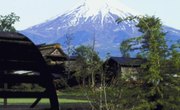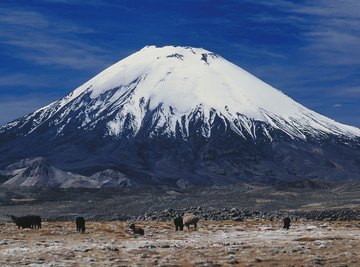
Volcanoes mark vents where molten rock achieves the Earth’s surface -- often in violent fashion. From subtle fissures to skyscraping peaks, these landforms are both destructive and constructive: They can smother terrain and ecosystems with lava, mudflows and ash, but also nourish biological communities with fertile soil and -- significantly -- create new topographic features.
Volcanoes as Landforms

Volcanoes, of course, are themselves landforms: sometimes subtle, sometimes unmistakable and dramatic. The steeply conical silhouette of a composite or stratovolcano -- the classic image of a volcano in most minds -- derives from intermixed layers of viscous lava, ash and other “pyroclastic” materials accumulated over many eruptions and emissions. In sharp contrast, a shield volcano -- such as enormous Mauna Loa and Mauna Kea in Hawaii -- assumes a much gentler slope from easily flowing basaltic lava. Volcanoes may also assume the shape of cinder cones and lava domes. Where weathering and erosion have stripped outer layers from extinct volcanoes, all that may be left on the landscape are resistant remnants of their “throats” and conduits in the form of volcanic necks (or plugs) and dikes. A world-famous example of the former is Shiprock in New Mexico. In the oceans, volcanic seamounts and island arcs are major features marking volatile tectonic margins.
Craters and Calderas
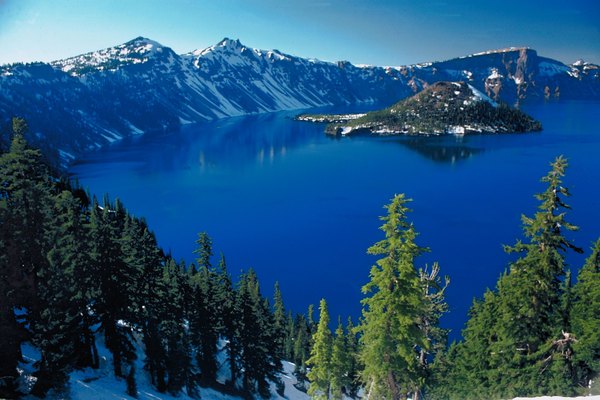
A volcanic crater is the opening of the conduit conveying magma to the surface. Typically it’s a relatively small concavity marking a vent, as at the main summit of a volcano. Far larger is a caldera, which basically is a ruined or collapsed crater formed from an explosive eruption or simply the emptying of an underlying magma chamber. “Caldera” stems from the Spanish for cauldron. These gaping depressions are often upwards of 16 kilometers (10 miles) broad, and sometimes wider. Oregon’s Crater Lake in the Cascade Range is misnamed: It’s actually a caldera created by the massive eruption of Mount Mazama some 7,700 years ago, then subsequently flooded with snowmelt. Often -- as at Crater Lake -- new volcanic cones begin forming within a caldera, demonstrating the volcano, despite its blasted mouth, is far from dead.
Eruptions and Landforms
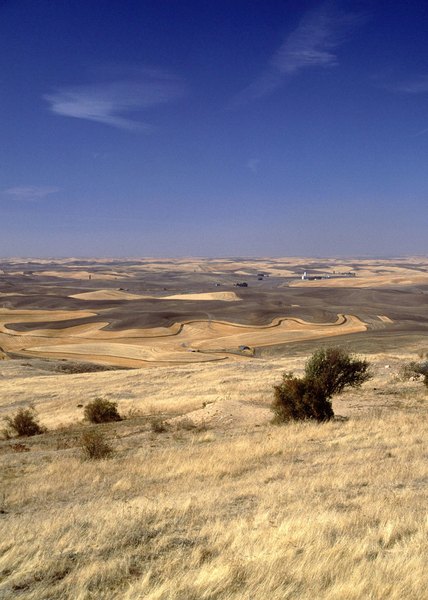
Volcanoes also build landforms far from their vents through the spread and petrification of their magma and other pyroclastic materials. Fissure eruptions of basalt, often called “flood basalts,” can build vast lava plateaus that cover thousands of square kilometers. The Columbia Plateau in the northwestern United States is an example; others are the Deccan and Siberian traps. Lava flows often follow existing river drainages. If weaker surrounding rock erodes away, the flow, now a topographic ridge, may create an “inverted valley.”
Interacting Geomorphic Forces
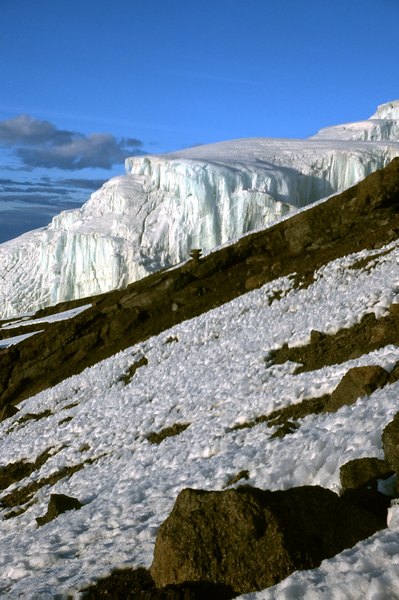
A volcano’s influence on a landscape never occurs in a vacuum. Other land-sculpting factors function in tandem, and the interaction can produce distinctive geomorphic features. High volcanoes often support alpine glaciers, and the carving work of these ice masses counteracts the mountain-building action of active eruptions. Mount Jefferson in the Oregon Cascades is not extinct, for example, but during its recent quiescence glaciers have gnawed a craggy cone of its summit. Eruptions that occur under ice caps, such as those in Iceland or Antarctica, produce their own characteristic landforms as fresh-flowing lava meets ice, for example, the mesa-like mountains called “tuyas.” Rivers, meanwhile, readily carve canyons on the slopes of volcanoes. A stratovolcano or shield volcano commonly supports a distinctive radial drainage with streams dropping on all sides from the central summit.
References
- U.S. Geological Survey: Volcanoes -- Principal Types of Volcanoes
- U.S. Geological Survey: Volcanoes -- Other Volcanic Structures
- Volcanoes of the Earth; Fred M. Bullard
- U.S. Geological Survey: Volcano Hazards Program -- Crater Lake
- U.S. Geological Survey: Cascade Volcano Observatory -- Lava Plateaus and Flood Basalts
- Utah Geological Survey; Inverted Topography in St. George Area; Mark Milligan
- Wired; Eruptions -- Eruptions Word of the Day: Tuya; Erik Klemetti
- An Introduction to Environmental Systems; G.H. Dury
About the Author
Ethan Shaw is an independent naturalist and freelance outdoors/nature writer based in Oregon. He holds a B.S. in Wildlife Ecology and a graduate certificate in G.I.S. from the University of Wisconsin-Madison. His primary interests from both a fieldwork and writing perspective include landscape ecology, geomorphology, the classification of ecosystems, biogeography, wildlife/habitat relationships, and historical ecology. He’s written for a variety of outlets, including Earth Touch News, RootsRated, Backpacker, Terrain.org, and Atlas Obscura, and is presently working on a field guide.
Photo Credits
Ablestock.com/AbleStock.com/Getty Images
